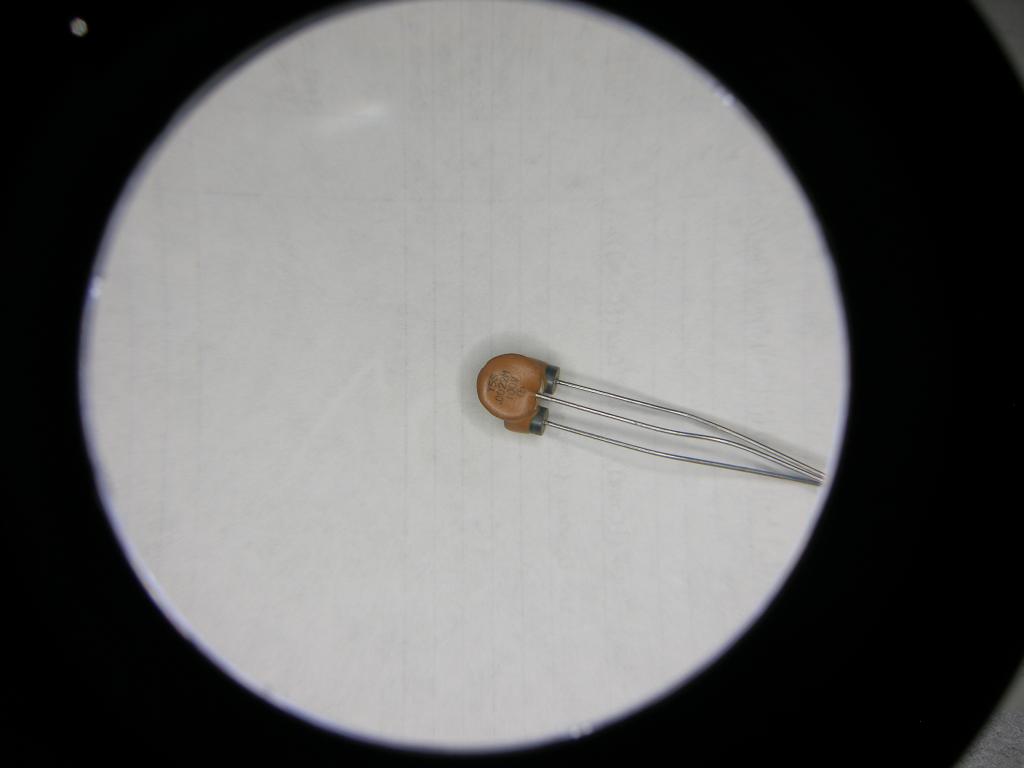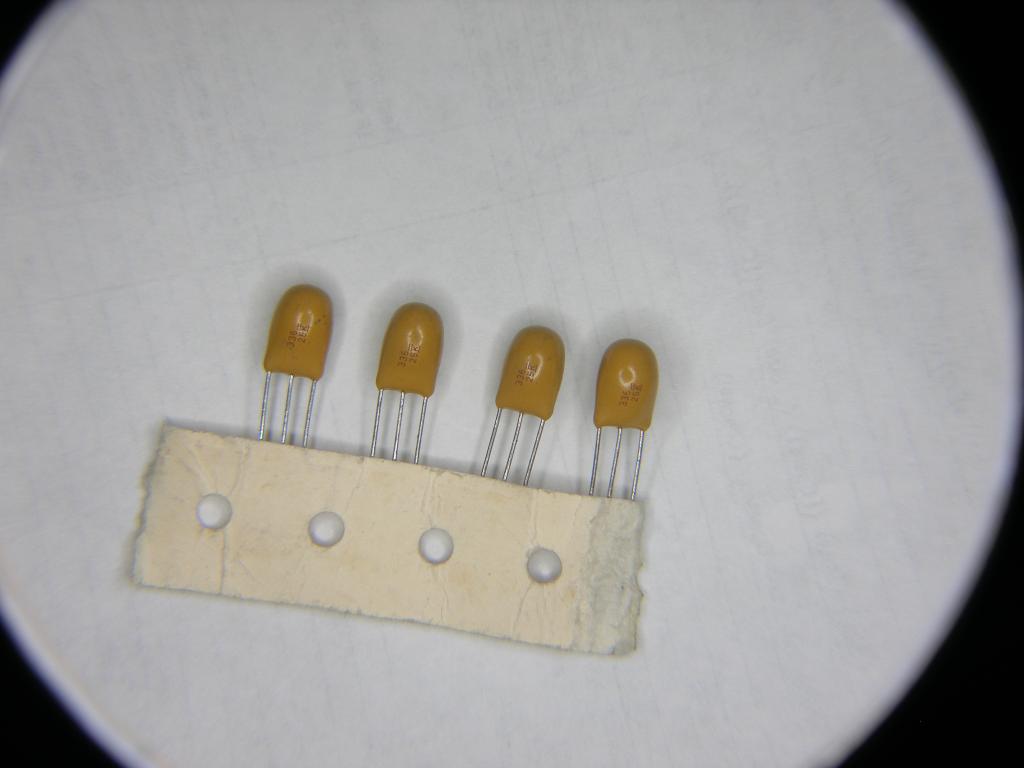what are these components?
I sorted a grab bag of random parts and found these parts

this one has Y5S.0022M100V written on it

this one has 33625 written on it
they look like capacitors except they have three legs
googleing the numbers on the parts doesn't help
does anybody here recognize what these are?

this one has Y5S.0022M100V written on it

this one has 33625 written on it
they look like capacitors except they have three legs
googleing the numbers on the parts doesn't help
does anybody here recognize what these are?


Comments
Edit: I withdraw my statement.
Do you have a capacitance meter that you can use to check them? Are any pins connected to each other? My guess is that the outside pins of the presumptive tantalums are connected together and that they're designed this way to prevent reverse insertion by unskilled workers.
-Phil
My assumption on the bottom set is that they are dipped tantalum, and the center leg is positive, the two other legs are negative. It wouldn't take long to verify that with a meter.
-- Gordon
-Phil
The multimeter also showed the first part had infinite resistance between the center and outer legs.
So final conclusion is that they are capacitors
Now, what are these bumps for?
and Phil, where did you learn capacitor codes? I had no idea "Y5S" referred to the dielectric
Likely a by-product benefit. There would be no need to manufacture a 3-lead non-polarized disc capacitor, like the top example, if it were just to compensate for errors in manual insertion.
I've only seen these in RF or EMI suppression applications, though I'm sure folks use them for other things too.
-- Gordon
-Phil
Only indirectly. These are EIA standard tolerance and temperature coefficient codes, which tend to be used for specific types of capacitors.. The Y means 30°C low temp, 85°C high temp, and tolerance or value change over this range of +/-22%
-- Gordon
-Phil
Lawson
I think you nailed it: www.techno-star.biz/others/dss306.pdf
-Phil